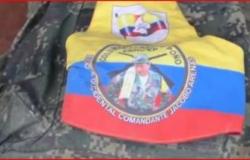Yes to the inhabitants of Manizales When asked what has been the most difficult year for this city in its recent history, most would answer 2011. Between October and November of that year, Manizaleños They spent 17 days without water due to landslides that blocked the aqueduct intakes. Furthermore, another The avalanche broke a pipe and the city was left without domestic gas. And to top it all off, days after the restoration of drinking water service, a landslide It devastated part of a neighborhood and caused the death of 48 people.
Yes, all that in less than a month. At that time, Colombia was going through the inclemency of an intense La Niña phenomenon, in addition to the fact that the last quarter of the year has traditionally been a rainy period. Although the inhabitants of Manizales know very well that in winter there is a great possibility of landslides and tragedies, no one imagined what happened in 2011.
The beginning of the tragedy
In the early morning of October 19, 2011, firefighters from the La Enea neighborhood reported that a gigantic landslide blocked the inlet of theto the Luis Prieto Gómez treatment plant of the aqueduct. Authorities warned that more than half of the city would be left without drinking water service. Then, they announced that they would have tank trucks to bring the vital liquid to the neighborhoods. Meanwhile, it didn’t stop raining in the city.
With the shutdown of the Luis Prieto Gómez plant—the most important in the aqueduct system—the supply of drinking water was provided by the Luis Prieto Gómez II plant. But the unexpected happened. Another collapse blocked the intake on the second floor and The city was left without the possibility of producing water suitable for human consumption. The city of about 380 thousand inhabitants at that time began to experience an ordeal that lasted for three long weeks.
Manizales was supplied with tank trucks, the water had to be carried.
Photo:Time
The then mayor of Manizales, Juan Manuel Llano, ordered the suspension of classes in public schools and private schools and universities did the same. In industries and commercial establishments they worked until there was water. State entities suspended attention to the public. Shopping centers closed their bathrooms.
But the most complex situation was experienced in the streets of the city when the water ran out in the houses and residential complexes. Families began to take to the streets when a tank truck arrived from a nearby municipality to form long lines, with buckets, cans, jars and even plastic tubs for bathing babies; Any container that was used to collect water was used.
The inhabitants of the Cervantes neighborhood protested the lack of water.
Photo:CEET
Although the Mayor’s Office tried to distribute the tank trucks that arrived from nearby municipalities throughout the city, there was no shortage of fights between neighbors in the streets for not respecting the lines. The conflicts increased as the days passed and the intakes continued to be blocked. In some neighborhoods there was disorder, burning tires and throwing stones. There was no need for the former Mobile Anti-Riot Squad (Esmad) of the Police to act. Besides, where was he going to get water to disperse the protesters?
In those three weeks, the inhabitants of Manizales who had a car always carried jugs with lids because at any moment they could find a tanker delivering water, with a not-so-long line and they had time to do it.
‘Macondo in Manizales’
The authorities decided to conserve firefighter water in case a fire broke out. One day, at the central station of the relief agency they received a call reporting a fire in some homes in the San José commune, which is located in a sector with profound social problems. A fire extinguishing machine, with several firefighters, went out to attend to the emergency. When they located the address where the houses were supposedly burning, there were no flames, but there were men who intimidated the firefighters into delivering the 3 thousand liters of water to people who already had the buckets ready.
During the days when Manizales was without service, people collected rainwater to use in bathrooms and cleaning their houses. There was no shortage of those who bathed their body under a roof. Many people, especially in rural areas, looked for water sources to supply themselves, but one, located in the city, caught the attention of the authorities. It was located on a hillside in the city’s central cemetery. The authorities had to ask those who took water from that place to stop doing so because that liquid could contain substances harmful to health.
The worst ending to a crisis
Three and a half hours later, a loud explosion caused alarm in the neighborhood and many took to the streets to see what had happened. A police patrol arrived at the scene at 6 in the morning and They warned that a large landslide was forming. Just 15 minutes later, the mountain creaked and in seconds 17 homes were covered by tons of earth. That morning the lives of 48 people were extinguished.
Landslide in the Cervantes neighborhood of Manizales that occurred around 6 in the morning.
Photo:Time
Investigations after the tragedy – one of the worst in the history of Manizales – concluded that The slide was caused by a burst pipe. Only until this year were the relatives of some of the victims compensated.
But that black November had another calamity for Manizales. On the 17th, a landslide in the Sabinas sector broke a 20-inch pipe of the Mariquita-Cali gas pipeline and the capital of Caldas, who barely had water again, was left without home gas as well as the Coffee Axis and the Cauca Valley.
The 2011 New Year’s Eve party has been perhaps the most celebrated by the inhabitants of Manizales. That December 31, many exclaimed: “This horrible year is finally over!”
Fernando Umaña Mejía
LATEST NEWS EDITORIAL
@ferumapress






